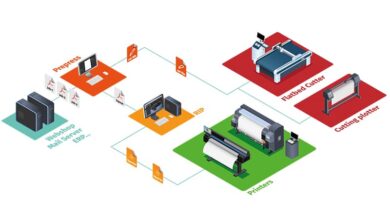Traditional Salesman: Post COVID19 Obstacle Racing?
Karina Princess Bagration, PhD

What was your last time shopping experience like? What promotions did you see then and how did they affect your decision to buy? No doubt, the sales process has changed dramatically over the years. Indeed, it is still largely based on personal trust and communication, especially in Middle East, but, with rapid technological growth, the deeper knowledge of product’s benefits is necessary. As competition is getting tough, international business focus on creating additional offerings and services around their products to meet the customer’s unique wishes. According to McKinsey and Partners, we are experiencing the rapid process changed again— sales leaders, even though adapting to new post COVID 19 realities, also need to adjust their selling process in the face of new customer habits and challenging economic times. In many ways, the changes in customer behavior and strategy are an acceleration of digital trends that were already in rapid development before the pandemic hit.

The Market Has Become More Complex
Regardless global pandemic, today’s decision-makers are harder to reach leading to sales productivity metrics reductions. Decision-makers frequently complain that sales representatives are seemingly not calibrated to access huge amounts of information so to do a good feasibility study is harder. Consequently, decision-makers stopped inviting them “to the club” which leads to bigger “product-client” alienation. Within that context, the number of deciding “white collars” is increasing. According to Gartner Group, a typical firm with 100–500 employees will have an average of 7 decision-makers or stakeholders. The increase in number might be explained by risk avoiding and it leads to bigger cost sharing between departments. In addition, all of these departments are seeking opportunities to reduce their overall spend.
Whereas salespeople needed to build strong bounds with marketing department influencers years ago, they now must obtain key information from Chief Marketing Officers, Chief Operating Officers, Chief Financial Officers, legal counsel, procurement executives, and even the IT Department, to name a few. The research of Corporate Executive Board (CEB) states, an average of 5 people influenced the decision-making only two years ago. Fast-forward to today, and that number has further increased to 6 people involved in every significant purchasing decision. Not surprisingly, this creates a more complex business environment for sales representatives and slows down both negotiation and deal closing.
What Drives Today’s Purchasing Decisions?
A further CEB research states that the sales experience with the focus on ability to convince is the most critical factor of the purchasing decision. Today’s customers place the highest value on salespeople who make them think, bring new creative ideas and innovative ways to help achieve their business goals. In short, customers are demanding more depth and expertise!
What? Or How? – These are the questions!
In conclusion, various additional researches clearly demonstrate that customer’s loyalty relay on emotional contact, another words it is more how you sell than what you sell. Furthermore, buyers are three times more loyal to sellers who constantly bring new opportunities to their attention. Many modern managers agree that the sales experience and loyalty is getting better by:
- Building and then offering unique market suggestions
- Helping customers to “navigate” in the ocean of multiple offers
- Teaching your team to avoid potential risks
- Educating and informing customers on new products and services by using new informational technologies
- Facilitating the buying process
- Obtaining vast support at all executive levels of your company.

.gif)




10 Comments